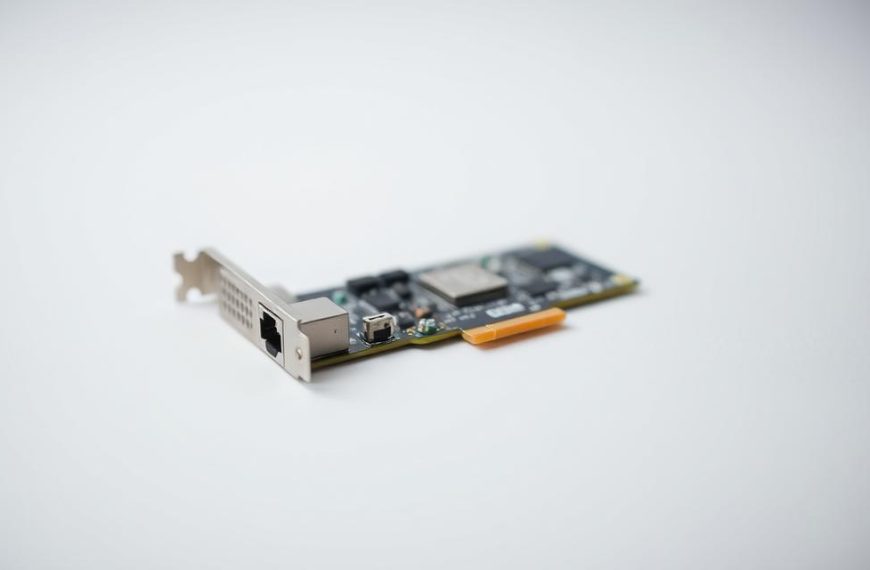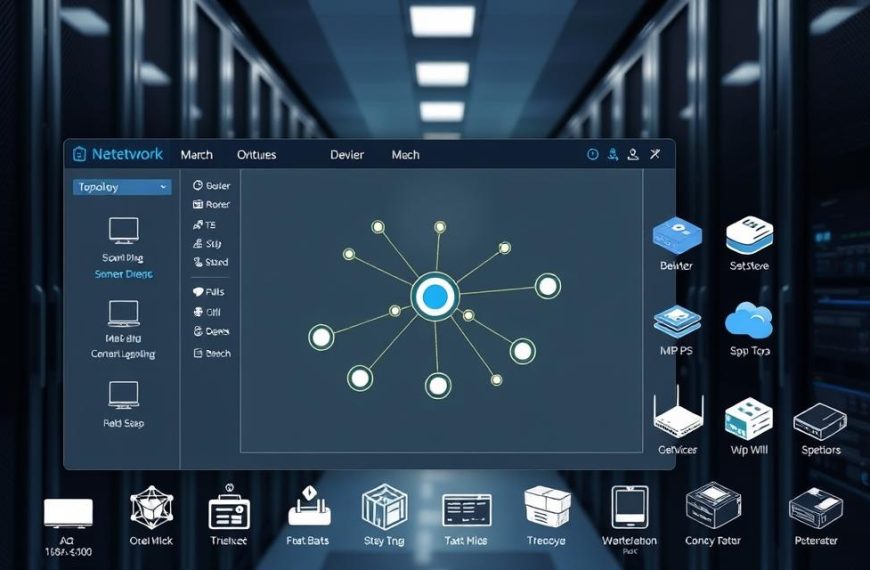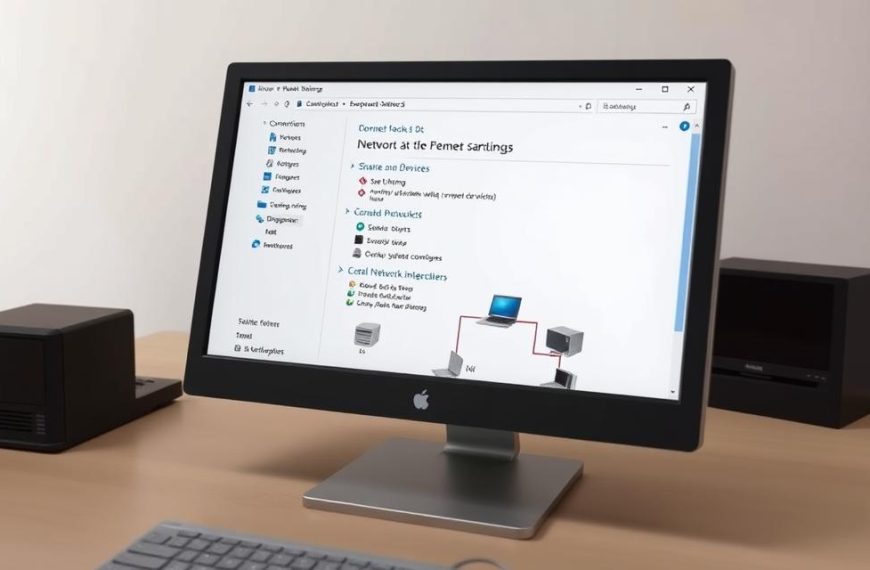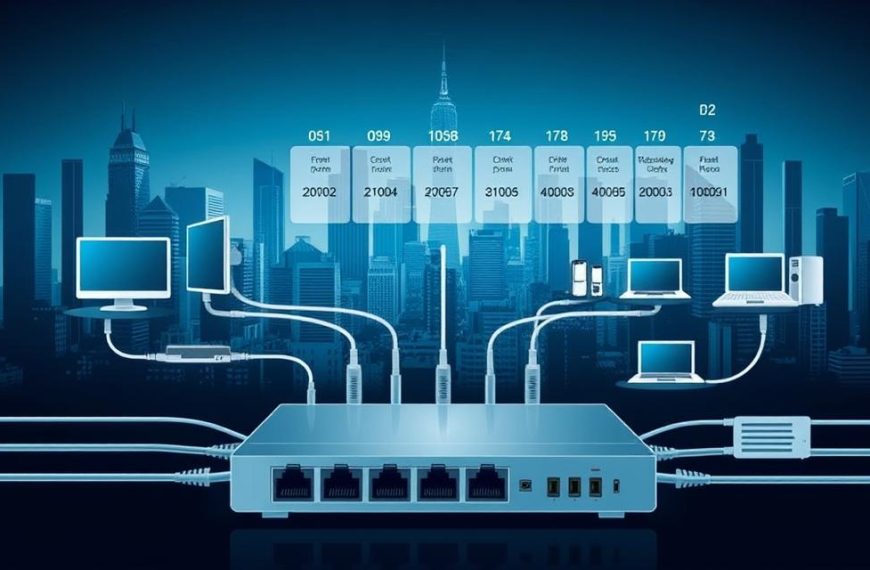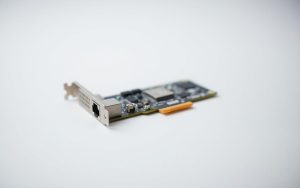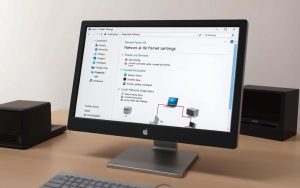At the heart of modern digital communication lies a key process. It lets computers send information over long distances through different media.
Modulation is the clever way of turning digital info into waves that can be sent. It embeds data onto a carrier signal, making it ready to be sent.
This process is vital for data transmission in various networks. Without network modulation, devices can’t talk to each other reliably.
The method changes digital bits into analogue signals for sending over physical mediums. This ensures the info gets to its destination safely and correctly.
Fundamentals of Data Transmission
Understanding how information moves between devices is key to good data transmission. This knowledge helps us see the difference between digital and analogue signals. It also shows why modulation is vital for today’s networks.
Understanding Digital vs Analogue Signals
Digital signals are made up of just zeros and ones. They work well over short distances but get worse over longer ones.
Analogue signals, on the other hand, are smooth waves that change over time. Sine waves are perfect examples. These signals travel better through mediums like copper wires or air.
The table below shows the main differences between these signal types:
| Characteristic | Digital Signals | Analogue Signals |
|---|---|---|
| Data Representation | Discrete binary values (0,1) | Continuous wave variations |
| Distance Performance | Poor over long distances | Better for long-range transmission |
| Noise Susceptibility | More resistant to interference | More vulnerable to signal degradation |
| Common Applications | Computer networks, digital devices | Radio broadcasts, traditional telephony |
The Necessity of Modulation in Network Communications
Modulation is essential because it overcomes big problems in direct signal sending. Without it, networking today would be very hard.
One big reason is antenna size. Smaller antennas are needed for higher frequencies. Modulation changes signals to higher frequencies, making small antennas possible for mobile devices.
Wireless communication relies on modulation. It turns data into a form that can travel through the air. This is how Wi-Fi and satellite communications work.
Modulation also stops signals from mixing up. Signals on different frequencies can share the same space. This makes it easier to use the spectrum for many systems.
These reasons make modulation a must for today’s networks. It changes data into something we can send and makes our equipment and transmission better.
What is Modulation in Computer Network
Modulation is key in computer networks. It connects digital data to physical media for transmission. This makes data transfer smooth across different channels.
Defining the Modulation Process
The modulation process changes a carrier wave based on an information signal. It turns digital data into signals that can travel through networks. The modulated wave carries the data in its changed form.
Devices use a modulator to send data on carrier waves. The receiver has a demodulator to get the data back. Together, they make a modem, vital for network communication.
Key Components: Carrier Signal and Information Signal
Modulation involves two main parts: the carrier signal and the information signal. The carrier is like a vehicle, and the information is the data being sent.
Characteristics of Carrier Waves
Carrier waves have three key traits before modulation:
- Constant amplitude – keeps the same signal strength
- Fixed frequency – has a specific oscillation rate
- Stable phase – keeps a consistent wave position
These waves are pure and carry no data but are perfect for long-distance transmission.

The baseband signal is the data itself. It changes the carrier wave’s properties during modulation.
The modulator adjusts the carrier’s amplitude, frequency, or phase based on the data. This embeds the data in the carrier wave, making it ready for sending.
This method helps data travel efficiently through networks. For more on network modulation techniques, check out this guide.
Primary Modulation Techniques
Network engineers use several key methods to send digital data. These methods change the carrier wave in different ways to carry binary information. The main types are based on changing the wave’s strength, frequency, or timing.
Amplitude Modulation (AM) Methods
Amplitude modulation changes the wave’s strength. It uses the signal’s power to encode information.
Standard Amplitude Modulation
Traditional AM changes the wave’s strength based on the message. The voltage peaks change, but the frequency stays the same. It’s good for analogue signals but struggles with noise.
Amplitude Shift Keying (ASK)
ASK uses different amplitudes to represent digital data. A high amplitude usually means binary 1, and a low or zero amplitude means binary 0.
This method is easy to implement but can be affected by noise.
Frequency Modulation (FM) Approaches
Frequency modulation changes the wave’s frequency. The number of cycles per second varies to carry information.
Frequency Shift Keying (FSK)
FSK uses different frequencies for binary values. One frequency is for binary 1, and another for binary 0.
This method is better at resisting noise than amplitude-based methods. It’s more stable against amplitude changes.
Phase Modulation (PM) Strategies
Phase modulation changes the timing of the wave cycle. The start of each cycle carries the information.
Phase Shift Keying (PSK)
PSK changes the phase angle of the carrier wave. Binary 0 might use a 0-degree shift, and binary 1 a 180-degree shift.
This method is very efficient and resistant to noise. It performs well in tough transmission conditions.
| Technique | Property Modified | Digital Variant | Noise Resistance | Common Applications |
|---|---|---|---|---|
| Amplitude Modulation | Signal Strength | ASK | Low | Broadcast radio |
| Frequency Modulation | Oscillation Rate | FSK | Medium | FM radio, modems |
| Phase Modulation | Wave Timing | PSK | High | Wi-Fi, satellite communications |
Each modulation technique has its own strengths for different needs. Knowing these methods helps engineers pick the right solution. The choice depends on bandwidth, noise, and complexity.
Modern Modulation Applications
Digital communication is getting better, and so are modulation schemes. These new methods help networks send data fast and use spectrum well.
Quadrature Amplitude Modulation (QAM) in Practice
QAM is a big step forward in modulation. It uses both amplitude and phase to send more data. This means faster data without needing more bandwidth.
Implementation in ADSL and Cable Modem Systems
QAM is key for fast internet over phone lines and cable. In ADSL, it makes high-speed internet possible over old copper lines.
Cable modems also use QAM. They offer different speeds and reliability with levels like 16-QAM and 256-QAM. Better QAM levels mean more data but need clearer signals.

Orthogonal Frequency Division Multiplexing (OFDM)
OFDM is a new way to send data. It splits data into many signals, each sending at a slower rate. This makes signals stronger against interference.
Usage in Wi-Fi and 4G/5G Mobile Networks
OFDM is the base of wireless standards. In Wi-Fi, like 802.11ac and Wi-Fi 6, it boosts speed and reliability in crowded areas.
In mobile, 4G LTE and 5G use OFDM for fast mobile internet. 5G’s OFDM is even better, thanks to new features.
Performance Considerations and Trade-offs
Choosing a modulation scheme is tricky. Engineers must weigh many factors to get the best performance for each situation.
Bandwidth Efficiency vs Noise Resistance
Modulation design faces a big choice: efficiency or noise resistance. High-order schemes like 256-QAM are efficient but need clean signals.
Lower-order schemes are better in noisy areas but send data slower. This choice is critical in mobile networks where signals change a lot.
| Modulation Technique | Bandwidth Efficiency | Noise Resistance | Typical Applications |
|---|---|---|---|
| BPSK (Binary Phase Shift Keying) | Low | Very High | Satellite communications, deep space |
| 16-QAM | Medium | Medium | Basic broadband, older Wi-Fi standards |
| 64-QAM | High | Medium-Low | Modern Wi-Fi, 4G LTE networks |
| 256-QAM | Very High | Low | 5G networks, high-speed cable modems |
| 1024-QAM | Extremely High | Very Low | Cutting-edge Wi-Fi 6/6E systems |
Today’s systems often use adaptive modulation. This adjusts based on signal quality. It boosts speed when signals are good and keeps connections stable when they’re not.
Conclusion
Modulation is key in computer networks, making it easy to send digital data over different channels. It helps with long-distance and wireless communication. This makes networks efficient and reliable today.
At the other end, demodulation is just as important. It takes the modulated carrier wave and turns it back into the original information. Without it, we couldn’t get our data back, showing how critical it is.
Modulation and demodulation work together in digital communications. They make sure data is sent and received correctly. This keeps our global networks working well.
Knowing how these processes work helps professionals improve network performance. It’s also key for using new technologies. Mastering modulation is vital for better communication in our connected world.


